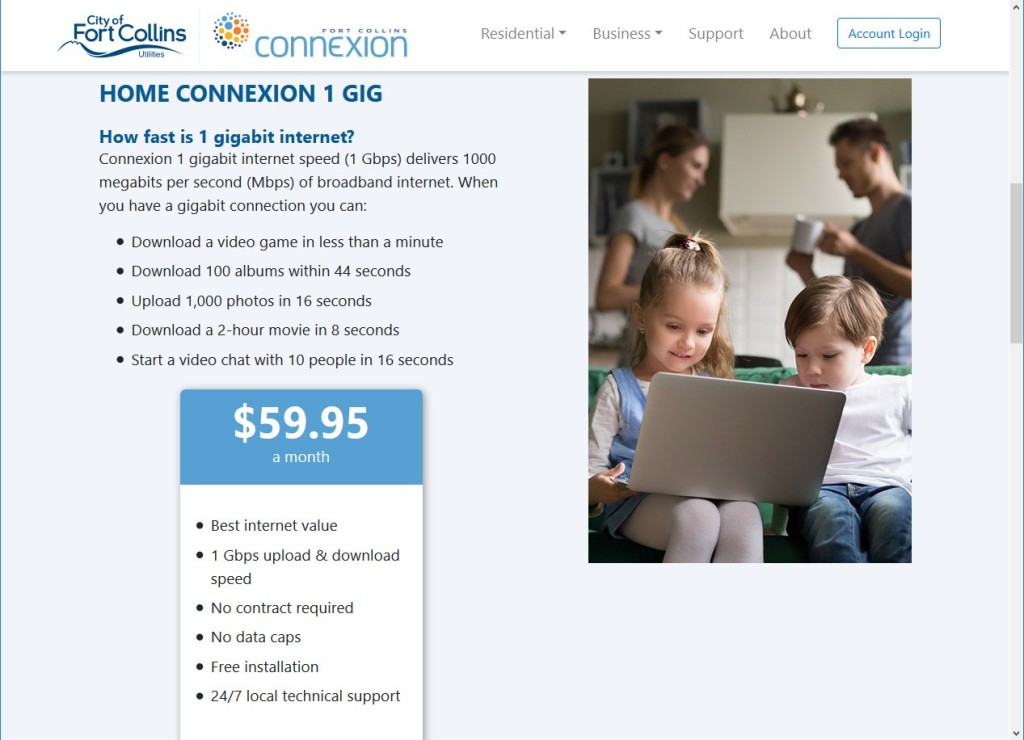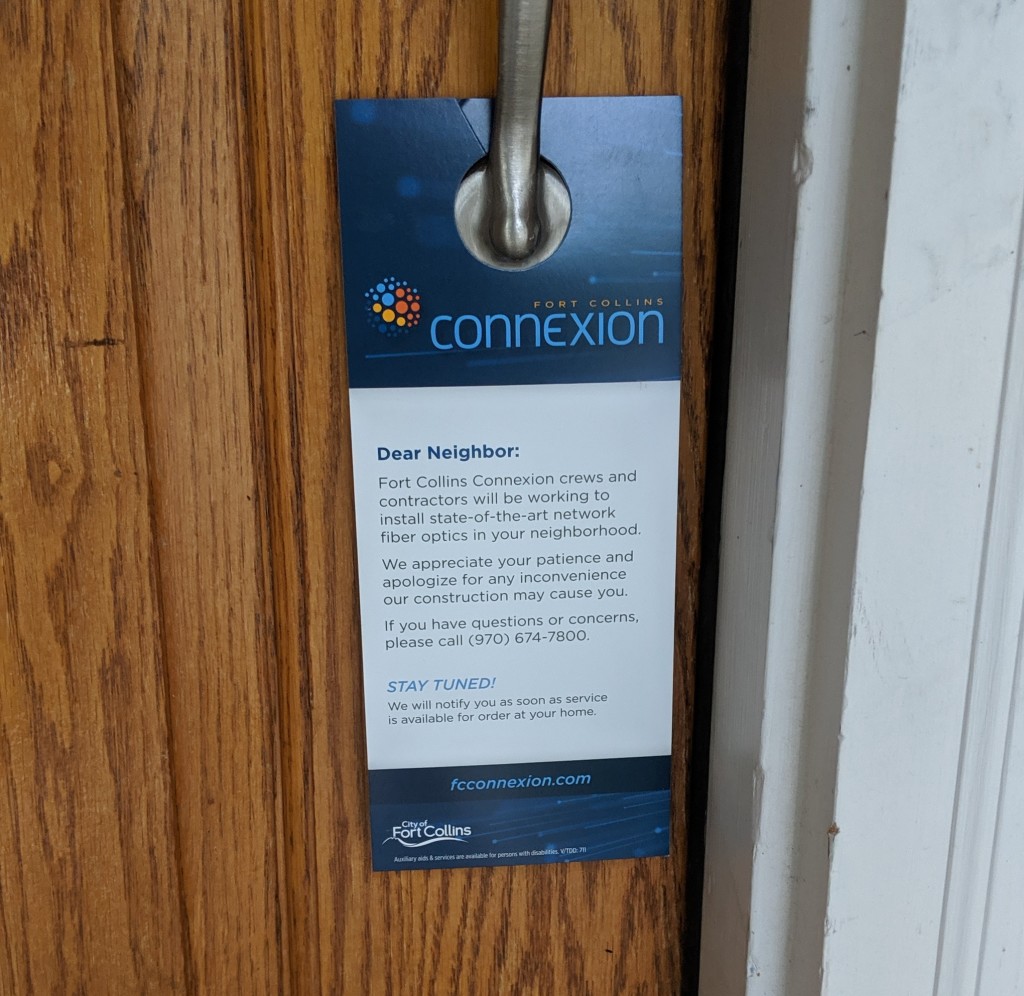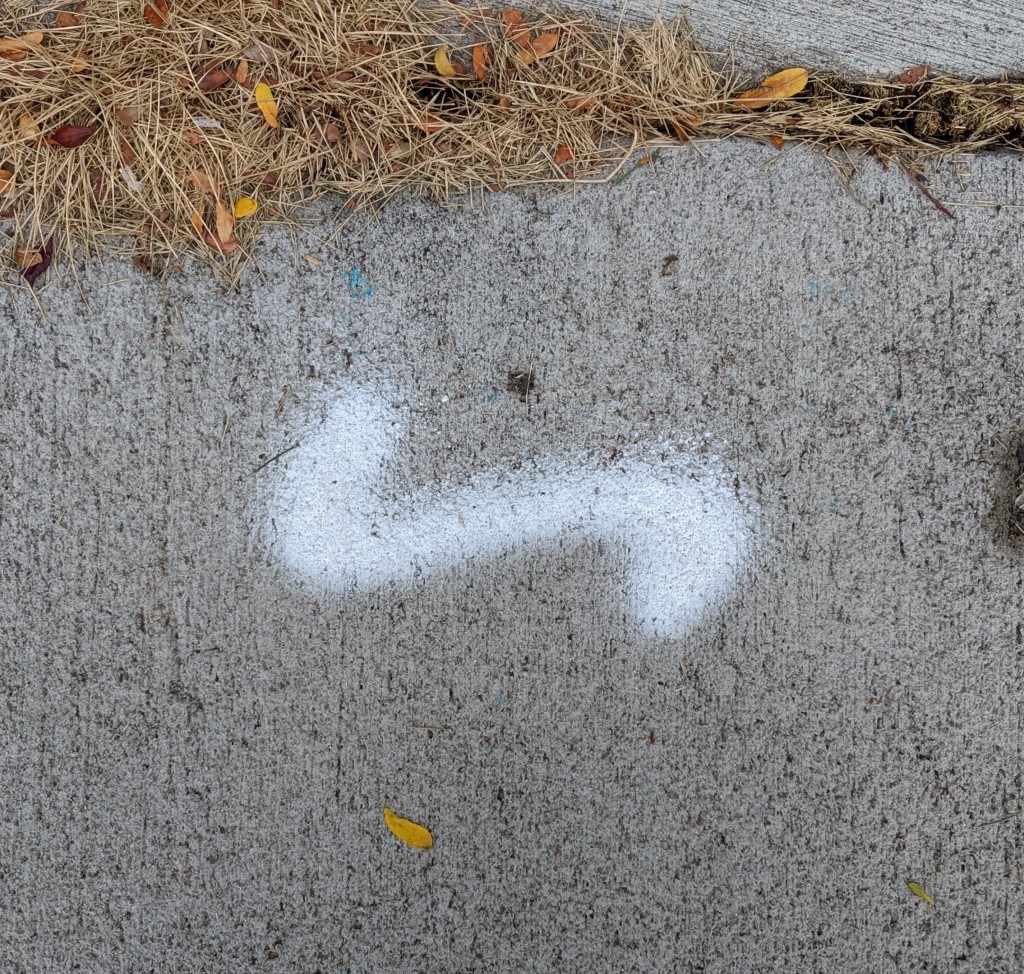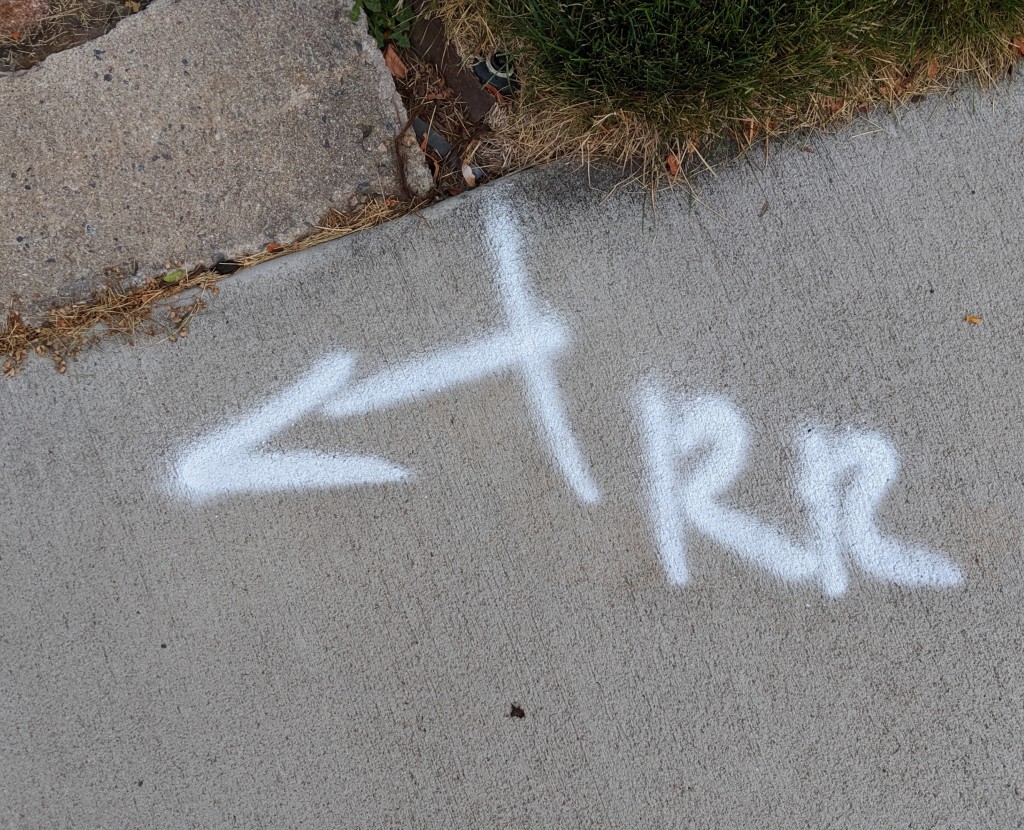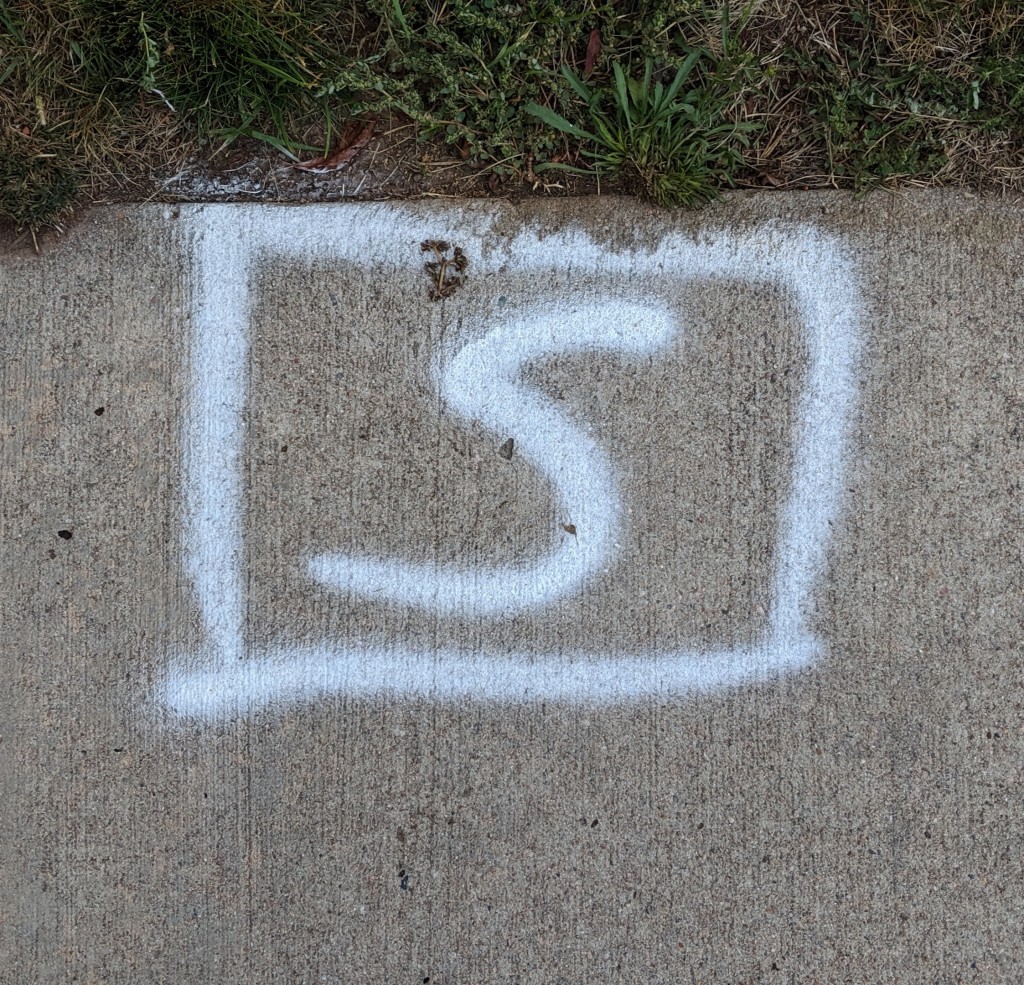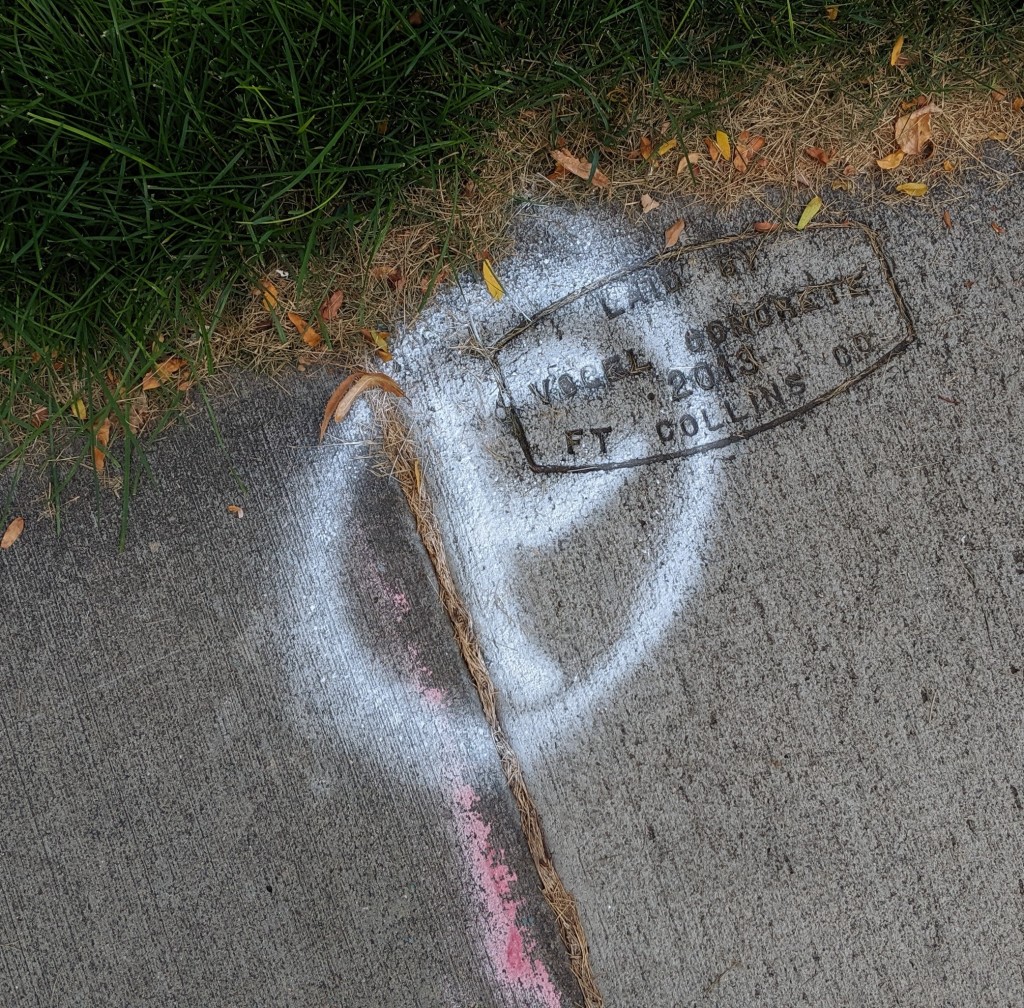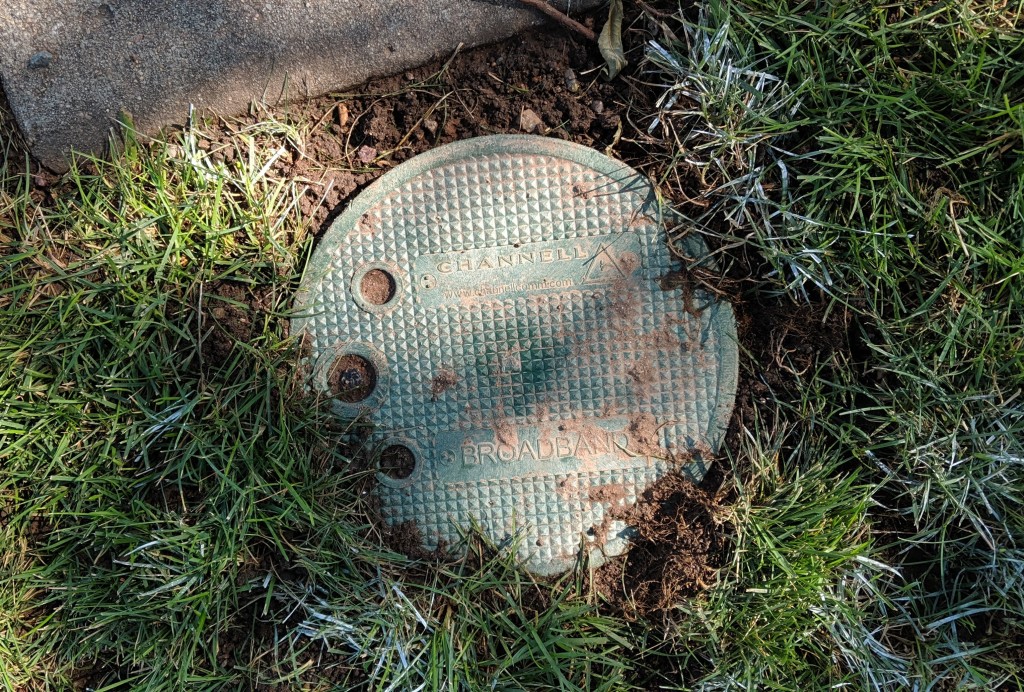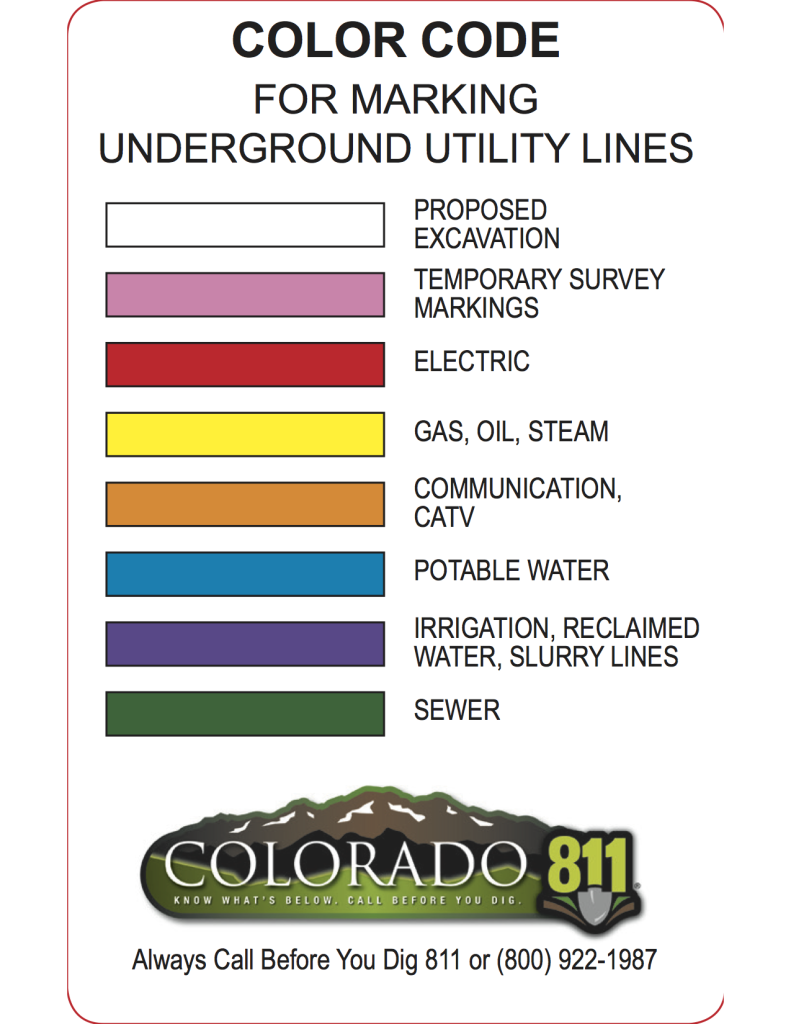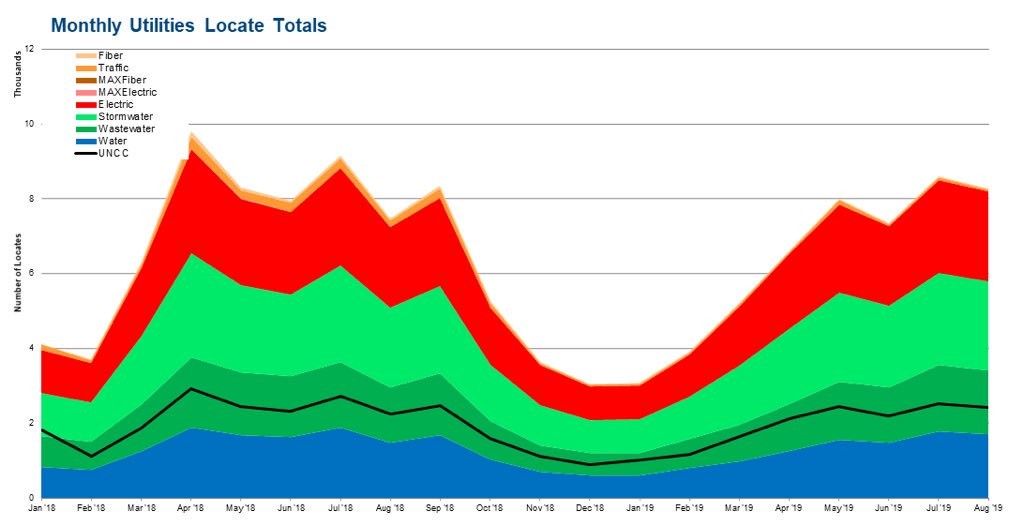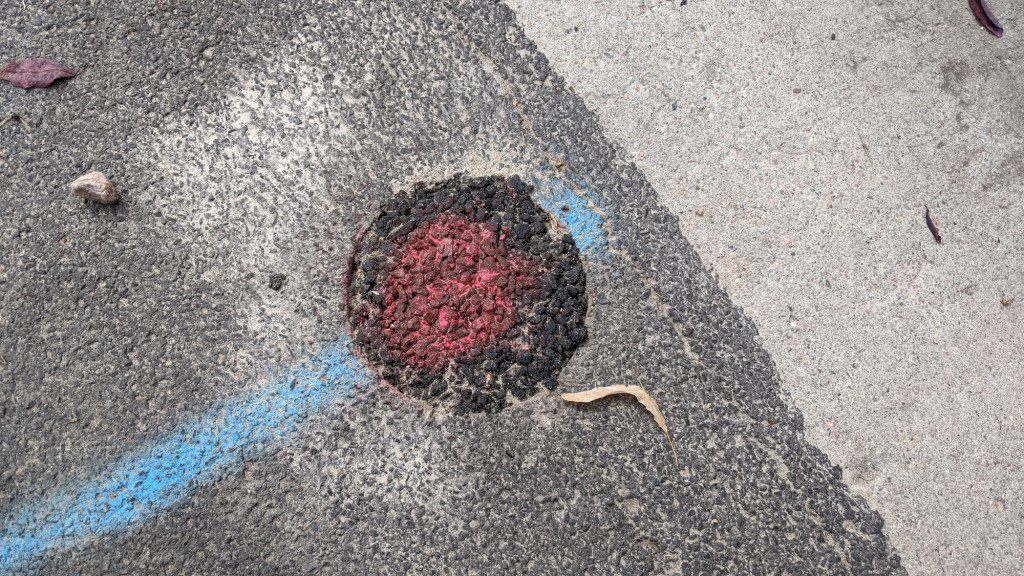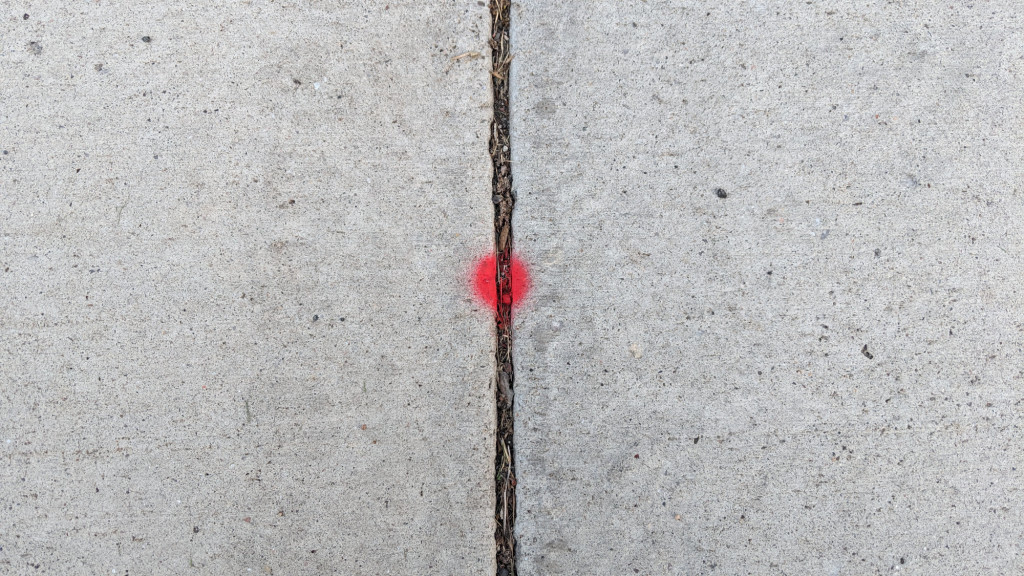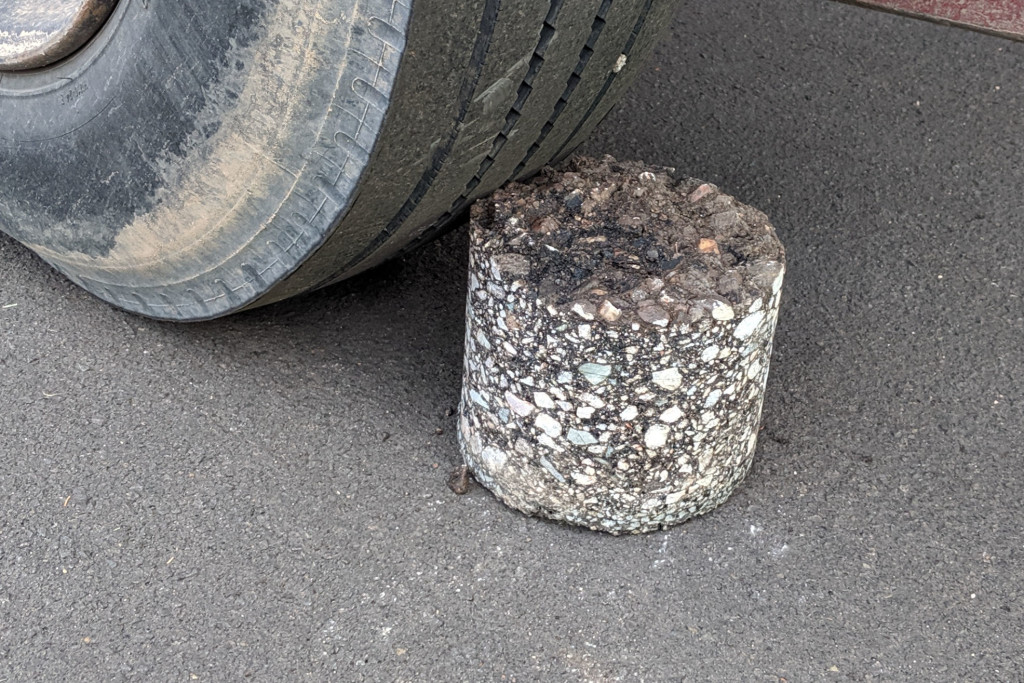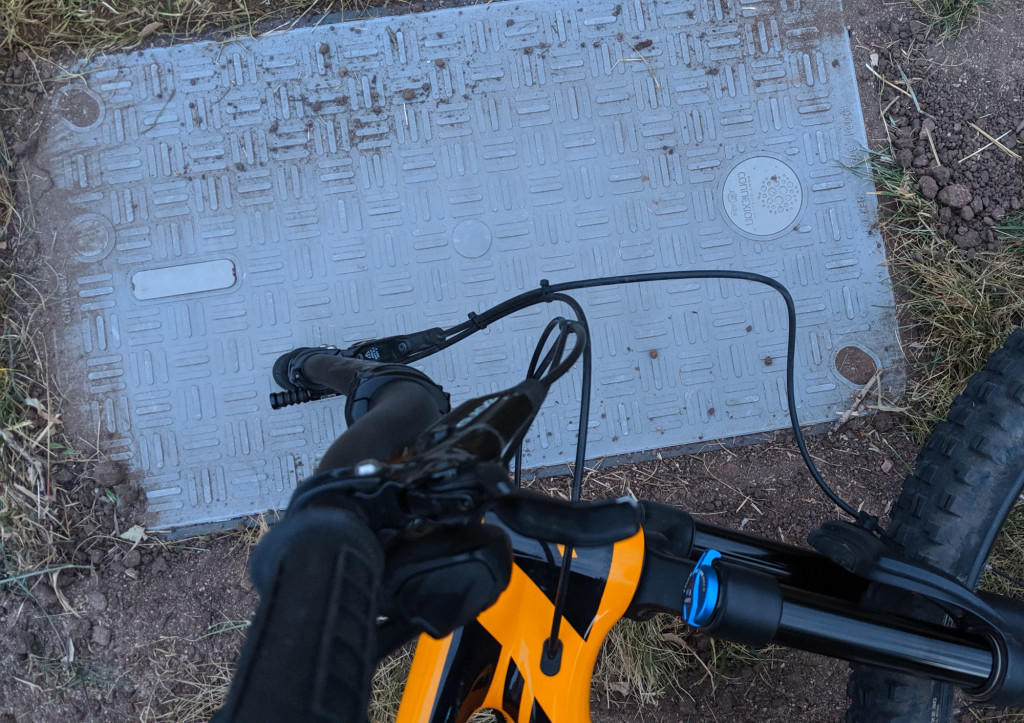
Splice vault. Bicycle not included. Notice the fancy Fort Collins Connexion and City of Fort Collins logos?
This post if the first in a series of post that describe the installation of the Fort Collins Connexion municipal broadband service. I’ll append new information to the bottom of the post whenever something happens on my street. When the post gets too long, I’ll start a new post. Work has been going on in the northwest corner of my neighborhood since the end of July. It’s only in the last week that activity has started happening on my street. Read on to hear more about the process.
August 27, 2019 – Nextdoor Post
On August 27, Fort Collins Connexion posted to Nextdoor that work would be starting in my neighborhood and seven others around me. Here’s the post:
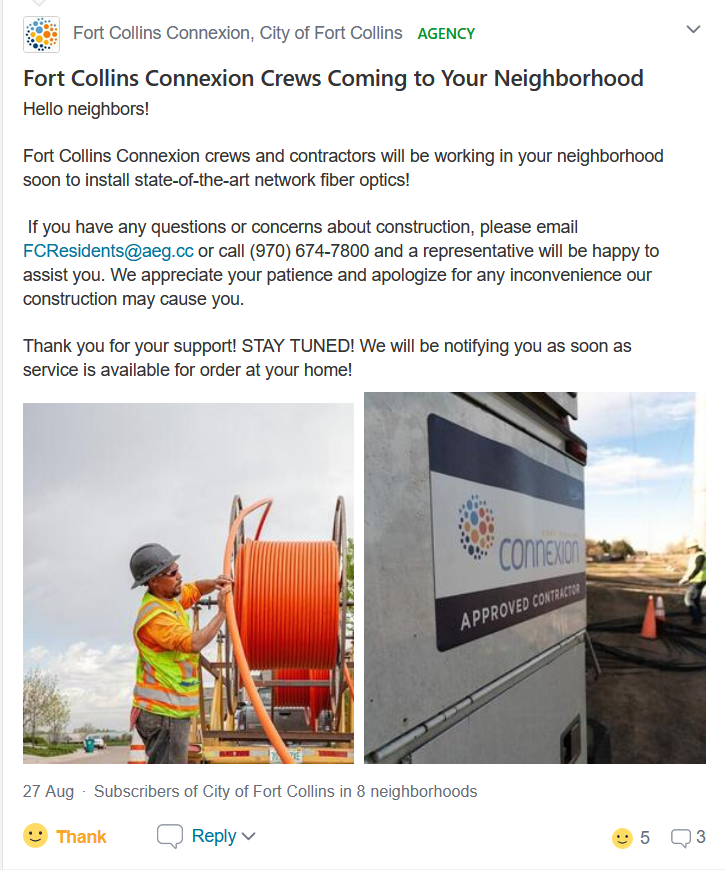
The August 27 post on Nextdoor announcing construction would begin in eight neighborhoods around me.
If you click on the ‘8 neighborhoods’ link in the post, you get this cool little map:
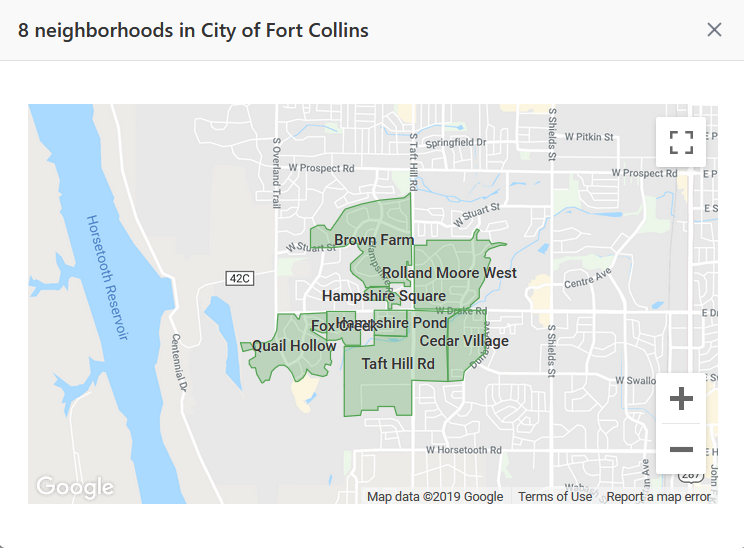
Map from Nextdoor showing the eight neighborhoods receiving the start of construction post from August 27.
August 29, 2019 – Pricing Announced (?) and Launch Party
On August 28, the Coloradoan published a story saying that pricing would not be announced until sometime after the Launch Party on the evening of August 29:
Residential pricing will be revealed soon after the launch party, Connexion marketing manager Erin Shanley said, although the city previously said that information would be available before the launch.
On August 29 around noon I tried fcconnexion.com. Surprise! The website was up and pricing was right there. I got a quick screen cap then tweeted it to the Coloradoan at 12:17 pm. Here’s the original screen capture:
I’m not sure if the website was supposed to go live then or not but it was. A few minutes later the website was down. It came back a few minutes later and stayed live the rest of the day. Throughout the day, there were several edits to the website. One edit in particular removed information about un-bundled video services.
Anyway, the fcconnexion.com website is live now. You can go there and view pricing and bundles. No way to check for service availability though.
The launch party was that night. Colin and I got a shout out from Mayor Wade Troxell. If you want to watch a video of the launch party, it’s available on YouTube:
September 5, 2019 – Door Flyer Announcing Construction
On September 5, Connexion placed a flyer on my door announcing the start of construction on my street:
September 5, 2019 – Route Marking
Also on September 5, a contractor went around my area marking the street with white spray paint. He was transferring the network design from a map on an iPad onto the street. Here are some of the markings and what they mean.
Fiber Route
Two markings are used to mark the fiber route. The first symbol is the route marking. The fiber will run in the right of way behind the sidewalk along these marks. They occur about every 10 feet or so.
The second marking is an end of route mark. The fiber stops at this mark.
Splice Vault
An ‘S’ on the sidewalk marks the location of a fiber splice vault. In the splice vault, the main trunk fiber is spliced to lots of fibers that branch off to serve individual homes.
Here’s what a finished splice vault looks like. This is a vault on another street. It’ll be at least a few days weeks until the ones near me are installed.

Splice vault. Bicycle not included. Notice the fancy Fort Collins Connexion and City of Fort Collins logos?
Flower Pots
Flower pots are marked with an F in side a circle. Flower pots are where the fiber in the street is spliced to the drop fiber that runs to the side of the house.
An example of an installed flower pot. It’s about the size of a small dinner plate. This is a flower pot on another street. It’ll be at least a few days weeks until the ones near me are installed.
The next step is utility locates where the locations of existing water, electric, and gas lines will be marked on the pavement. Hopefully this will occur early next week sometime.
September 7, 2019 – A Note About the Competition
I rode my bike to a new neighborhood to see what Comcast was doing. Believe it or not, Comcast is still installing coax instead of fiber. Furthermore, all their taps and equipment are above ground. Here’s a photo of one:
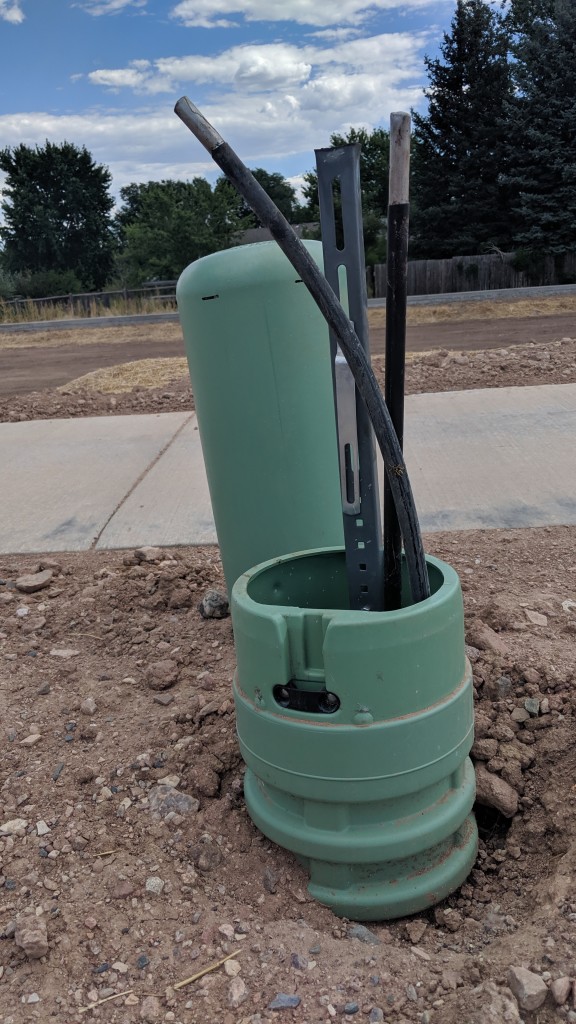
The future location of a tap for Comcast’s coax network in a brand new neighborhood in Fort Collins.
Compare this above ground Comcast eyesore to the all-underground vaults and flower pots being deployed by the city for the Fort Collins fiber network. Which would you rather have in your front yard for the rest of eternity?
September 9, 2019 – Utility Locates and Preventing Dig Ins
The week of September 9, 2019 crews came out and performed utility locates. Utility locates indicate where the existing underground utilities such as water, gas, and electric are buried. Locates are important so that crews don’t hit the existing utilities while trying to bury the conduit for the Connexion fiber optic network. By the end of the week, the locates were almost complete on both sides of the street and in the cul-de-sac. Here’s what one portion of the street looked like after they were done:
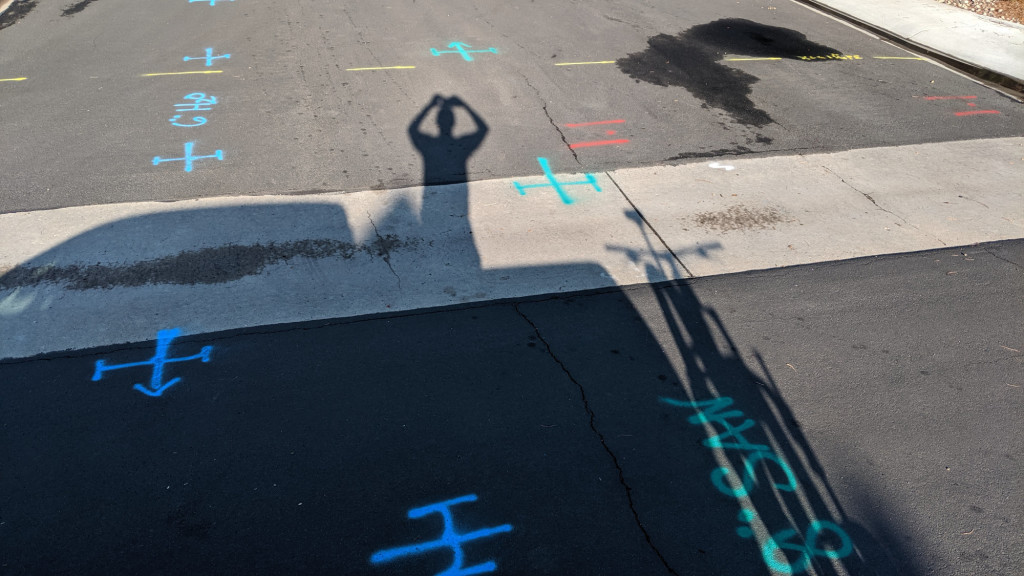
Sometimes you have to stand in the bed of your truck on your way out of town for the week to get the shot you want.
The first round of locates were electric, water, storm drain and sewer, and natural gas locates on the opposite side of the street from me. Crews came back later in the week and marked the same locates on my side of the street. For some reason, Xcel skipped natural gas locates in my cul-de-sac as of Friday, September 13. Xcel will need to come back out and finish their locates before conduit can be installed in my cul-de-sac.
What Do All The Colors Mean?
The colors are standardized and indicate the type of utility buried underneath the paint. The chart below from Colorado811.org shows the paint colors and what the colors represent.
Connexion is using a front of lot design which means the fiber optic cables will be buried in the front of the lots. In my neighborhood, electric, water, gas, and sewer run in the front of the lots and telephone and cable television lines run in the back of the lots. Since construction is only happening in the front of lots, most of the utility locates will be red for electric, blue for water, yellow for gas, and green for sewer.
How Many Locates Occur In Fort Collins?
Fort Collins Utilities averages over 3,000 locates per month with most of the locates concentrated in the warmer months. This number does not include locates by Xcel, Comcast, and CenturyLink who have their own crews and contractors to locate their underground lines. The chart below shows the number of locates performed by Fort Collins Utilities through August 2019.
With the construction of the Fort Collins Connexion fiber network, the number of locate tickets has not increased but the area covered by each ticket has increased by a factor of 10. Before a single ticket might be filed for a single lot in a subdivision. Now a single ticket might be filed for an entire street in a subdivision. Fort Collins Utilities does an excellent job locating and marking utilities. Last year they performed about 30,000 locates with an overall accuracy of approximately 99.99%.
Keyholes and Finding the Depth of Underground Utilities
The utility locates indicate where the existing underground utilities are buried but they don’t indicate the depth of the cable, conduit, water, or gas line. Depths could range anywhere from six inches for the new piece of coaxial cable Comcast buried in your backyard to six feet for the sewer line that slopes downhill from your basement shower drain to the manhole in the street. Fort Collins Connexion is aiming to bury most of their conduit at a depth of two to three feet.
In order for the Connexion contractors to bury their cable at a depth of two to three feet without hitting the existing utilities, they need to know the depth of the existing utilities and route their drilling either above or below them. To determine the depth, they dig a small hole called a pothole or keyhole.
If they’ve done work on your street, you may have seen these. They’re small holes about four inches in diameter that are placed at the intersection of where a piece of Connexion conduit needs to run and where an existing utility is located. After the depth is measured, these are filled back in with asphalt or dirt. See the photo above for an example of a keyhole.
I’m still trying to figure out how they drill them without hitting the utility they’re trying to locate and will update when I have more information.
Dig Ins
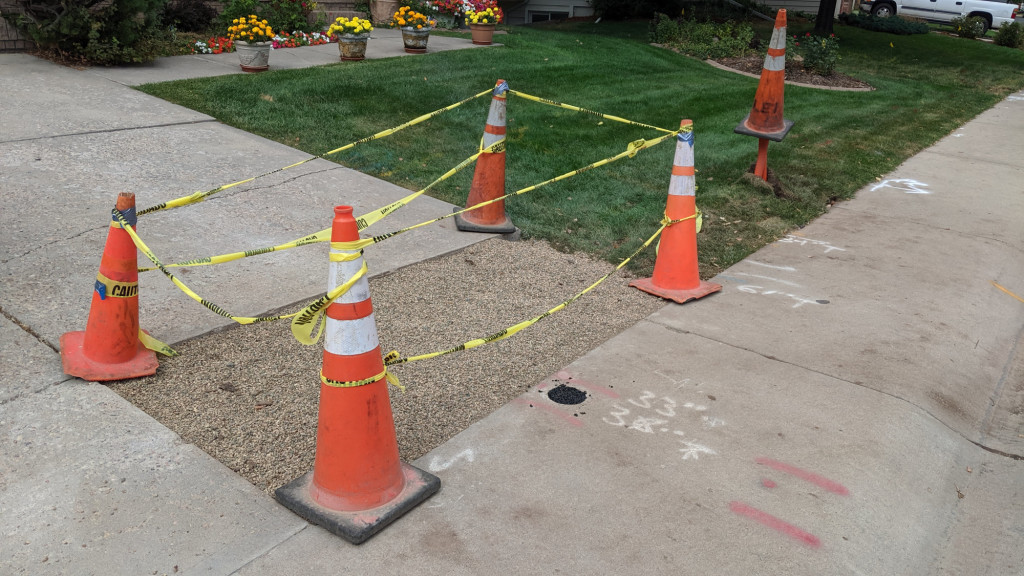
The aftermath of a dig in into an electric line in the Quail Hollow subdivision. The corner of the driveway had to removed to make repairs to the damaged underground electric line.
When a construction crew hits an existing underground utility, it’s called a dig in. A dig in can be extremely dangerous in the case of hitting an electric or gas line. A dig in happened about two weeks ago in the Quail Hollow neighborhood. A Connexion contractor hit a buried electric line with their horizontal boring equipment. The electric line was marked correctly and a keyhole had been dug to find the depth of the existing electric line but the contractor hit the line anyway. As a result the power to about 350 to 400 homes was out for four or five hours while the damage was repaired.
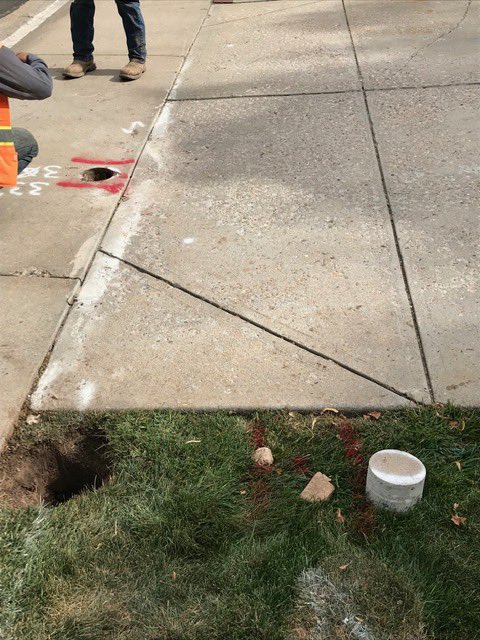
Another view of the dig in before repairs were started. This section of driveway needed to be removed to access the damaged electric line. The concrete core in the lower right hand corner is out of the keyhole cut into the sidewalk to find the depth of the buried electric line. Source: Fort Collins Utilities
Changes Since the Dig In
Fort Collins Utilities marks underground utilities on all edges of a driveway but tries not to mark the driveways themselves to reduce the number of complaints received. The paint is permanent and can take months to wear off. In the case of the dig in in Quail Hollow, the electric line was marked correctly and on all three sides of the driveway but the contractor hit the buried electric line anyway. As a result of this dig in, Fort Collins Utilities is now “dotting” driveways to mark utilities. The photo above shows a dot in the middle of my driveway where the electric line runs underneath the concrete.
That’s It for Last Week’s Construction Progress
That’s an up-to-the-minute run down of what has been happening with Connexion on my street and in my cul-de-sac. I’m hoping to see some directional boring or missile boring on my cul-de-sac soon. As soon as I do, I’ll be back with an update on the boring process and maybe have some info on how those keyholes are dug without hitting existing utilities.
September 20 – Digging Keyholes Without Damaging Existing Utilities
If you remember from above, keyholes or pilot holes are small holes bored directly above an existing utility to determine how deeply the existing utility is buried. Once the depth of the existing utility is determined, the path for the new utility can be bored to go above or below the existing utility to prevent a dig in. These keyholes can be several feet deep. The trick is to dig these holes and locate the existing cable or pipe without damaging the existing cable or pipe.
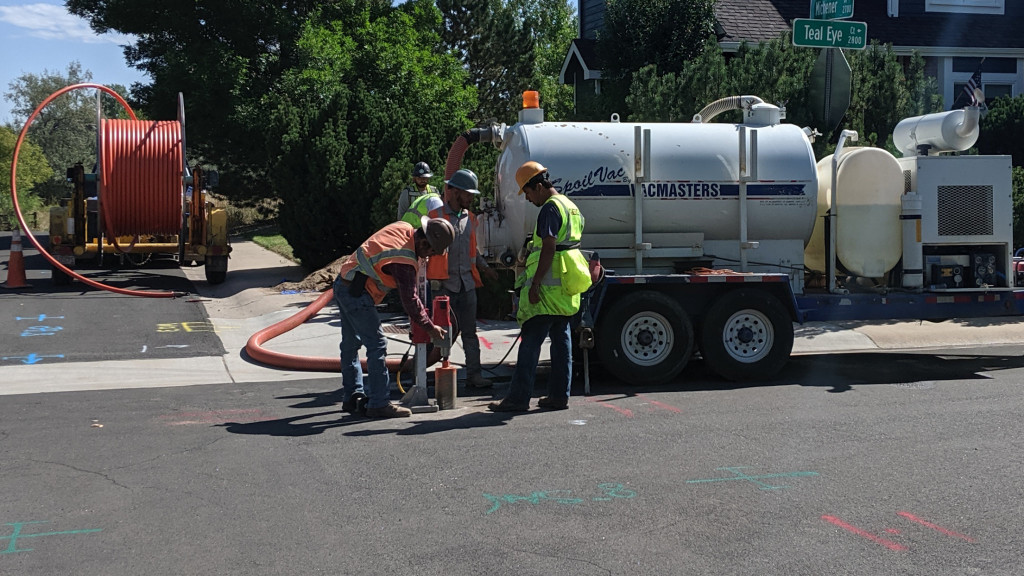
These workers are setting up a core drill to drill through the asphalt road surface and expose the dirt underneath the road. Once the core is removed, they’ll excavate downward until the electric line is visible. Once they know the depth of the electric line, they’ll guide the horizontal boring equipment either above or below the electric line. That’s a giant vacuum behind them.
The first step in the process is to drill a hole through the concrete sidewalk or asphalt road using a core drill placed directly over the existing utility line. The core drill resembles a large portable drill press. A drill with a large concrete bit is mounted on the press then a wheel is turned on the side of the core drill to lower the bit into the concrete.
During the process, water is used to cool the bit and keep the dust down. As soon as the drill breaks through the concrete or asphalt, the drill is stopped and the core is removed. The photo above shows workers setting up a core drill and the photo below shows a removed core. This particular core is being used to chock the wheels of a trailer.
After the core is removed from the sidewalk or roadway or if they’re starting on dirt in the right of way, a high-pressure jet of water and a vacuum are used to excavate down to the existing utility. The water is sprayed into the hole to dig through the soil. A large vacuum is used to suck up the displaced soil, water, and mud. The water pressure is high enough to break up the soil but not high enough to damage the existing water, gas, communications, or electric line.
Once the existing utility is visible, the depth is measured and communicated to the person planning the horizontal boring equipment’s path through the ground. The goal is to bury the new conduit two to three feet below the surface while also keeping it at least one to two feet away from any existing utilities. When done, the keyhole is filled with dirt. If the keyhole is through asphalt or concrete, the keyhole is topped off with new asphalt on top of the fill dirt.
The photo below shows two workers using the high-pressure water jet and a vacuum to dig a keyhole through the soil in the right of way. The same process is used to excavate keyholes once the concrete or asphalt core is removed.
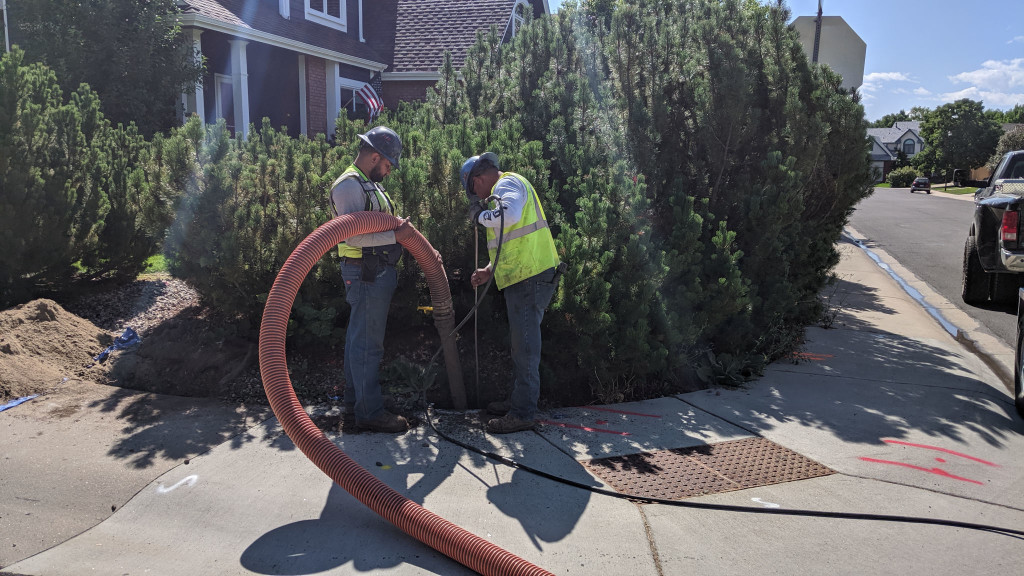
Workers use a pressure washer and vacuum to loosen dirt and expose the existing underground utility line. Once the depth of the utility is determined, the depth of the horizontal boring equipment is changed to avoid the existing utility.
September 20 – The Internet Really is a Series of Tubes
Last week two trailers carrying conduit were dropped off in the neighborhood! The conduit is placed underground and then the fiber is pulled or blown through the conduit at a later point in time. The conduit protects the fiber from damage. It also allows new fiber to be added to the system if needed later or damaged fiber to be removed and replaced.
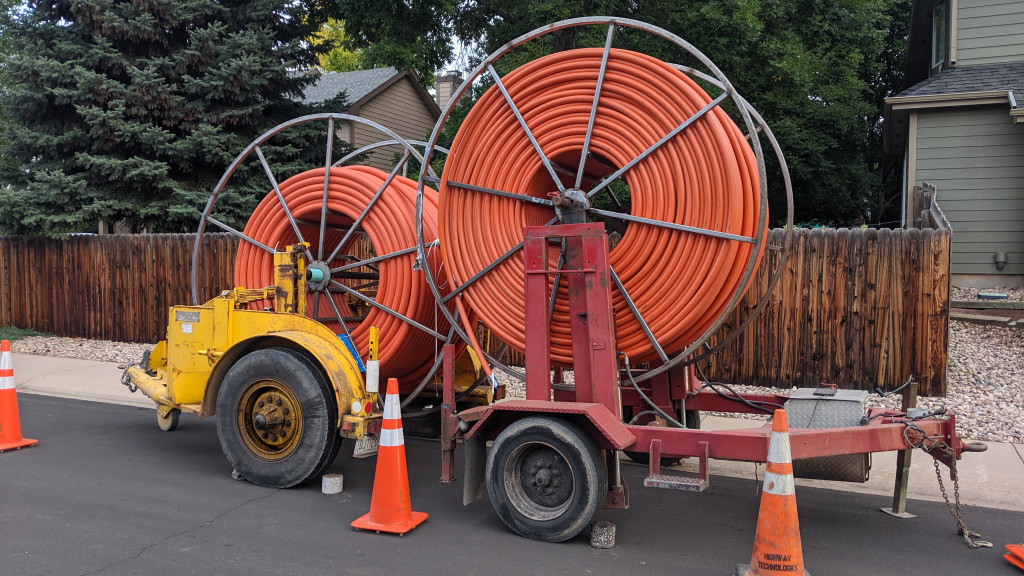
Two rolls of conduit. The smaller roll holds 4,000 feet of 2″ conduit. The larger roll holds 8,000 feet of 1.25″ conduit.
Fort Collins Connexion will bury at least 800 miles of conduit while building the network over the next three years. The majority of the cost to build the network is in the labor to bury the conduit. I’ve heard estimates from $10 to $20 per foot to install the conduit from other networks. If I remember correction, about $90,000,000 of the $142,000,000 bonded to build the network is for outside plant construction which includes the materials and labor to install the conduit, fiber, vaults, flowerpots, and splitters.
The conduit is extremely tough. A cross section of the 2″ conduit is shown below. It’s made out of high-density polyethylene (HDPE) plastic–the same stuff as Yeti coolers and whitewater kayaks. It’s flexible enough to be stored on spools and make gentle bends but it’s tough enough to be pulled through the ground during installation. The conduit resists root impingement as vegetation grows around it and it resists crushing as dirt and rocks shift underground over time.
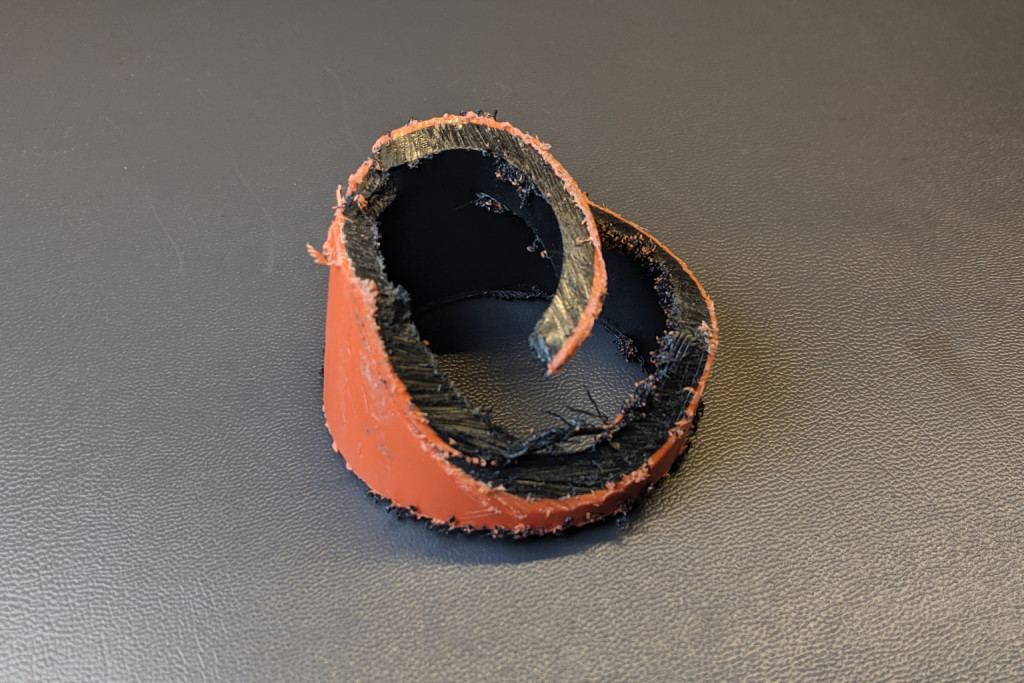
A cut off piece of the two inch conduit. The walls are about a quarter inch thick and extremely tough to deform.
The conduit is color coded using the same color code that is used for the utility locates. Since this network is a communications network, the conduit is orange. To facilitate pulling the fiber through the conduit later, the conduit manufacturer includes a preinstalled pull tape inside the conduit. I saw a slide a few days ago showing a single 1-1/4″ conduit comfortable holding a fiber cable containing 432 individual glass fibers. That’s enough fibers to serve over 10,000 homes.
The 2″ conduit shown in the cross section above is 2″ Smoothwall SDR-11 conduit. The manufacturer’s website says it has an outside diameter 2.375″, a minimum wall thickness of 0.216″ and a safe working load of 3,515 pounds. The 1-1/4″ conduit is 1-1/4″ Smoothwall SDR-11 conduit with an outside diameter of 1.66″, a minimum wall thickness of 0.151″, and a safe working load of 1,717 pounds.
From the construction on my street, the 2″ conduit looks to be used for longer runs of feeder or backbone fibers and the 1-1/4″ conduit looks to be used for shorter runs of distribution fibers. In other words, the fiber from the network runs through the 2″ conduit, is split to many smaller fiber cables inside a vault, then those smaller fiber cables run down the 1-1/4″ conduit to the flower pots.
A photo of the label on the roll of 2″ conduit:
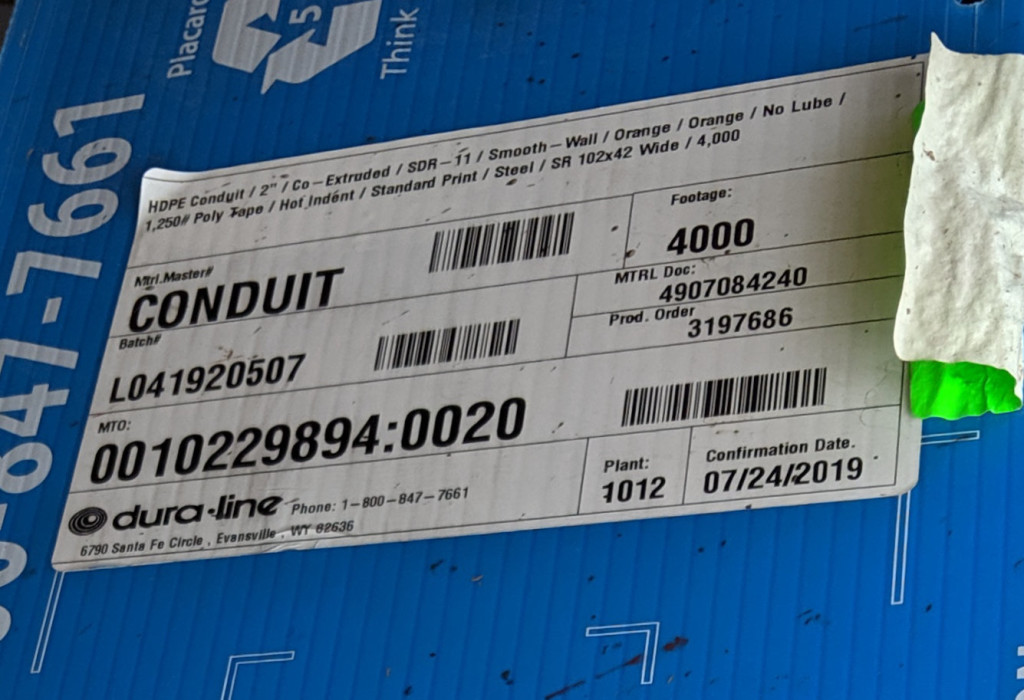
Close up of the label on the smaller roll. “HDPE Conduit / 2″ / Co-Extruded / SDR-11 / Smooth-Wall / Orange / Orange / No Lube / 1,250# Poly Tape / Hot Indent / Standard Print / Steel / SR 102×42 Wide / 4,000″
A photo of the label on the roll of 1-1/4″ conduit:
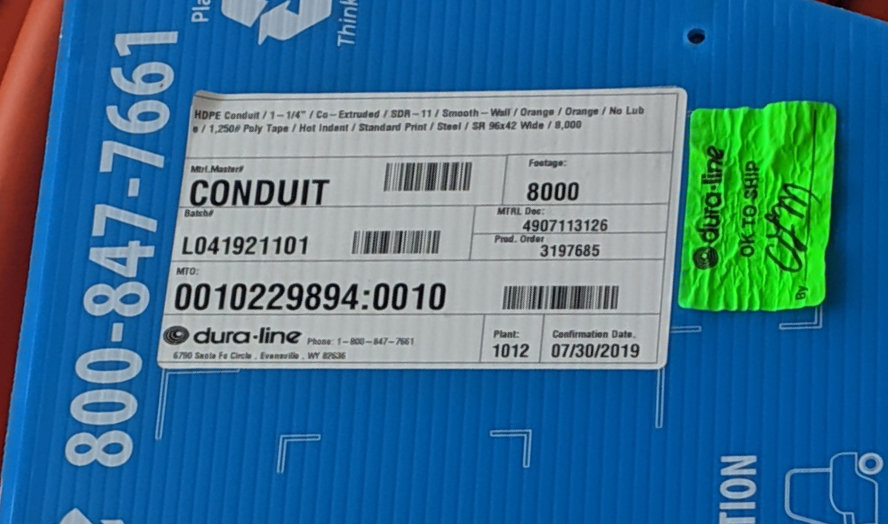
Close up of the label on the larger roll: “HDPE Conduit / 1-1/4″ / Co-Extruded / SDR-11 / Smooth-Wall / Orange / Orange / No Lube / 1,250# Poly Tape / Hot Indent / Standard Print / Steel / SR 96×42 Wide / 8,000″
Coming up next, we’ll talk about placing the conduit underground while causing minimal disruption to flower beds, driveways, lawns, streets, sidewalks, and other utilities. The two specific techniques used are horizontal directional drilling and missile boring.
End of Part One – The Journey Continues in Part Two
This first post is getting a big lengthy so I created a second post to document future events. The first entry in part two takes a look at using horizontal directional boring to install conduit with minimal disruption to surface activities. We even get into the magic of how the drill bit is steered underground to stick to the planned path and avoid utilities. The adventure continues in Part Two.

